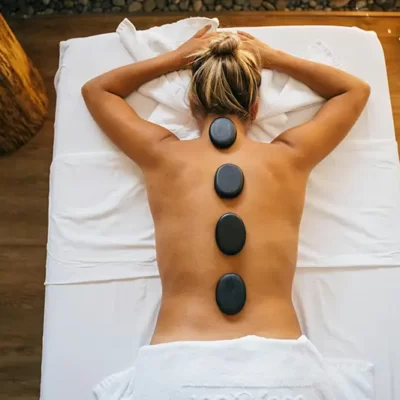How to Improve Your Menstrual Well-Being
Introduction
Menstruation, although a natural and essential biological process, can often become a source of significant discomfort and psychological impact for many. Premenstrual symptoms, such as abdominal pain, mood changes, and fatigue, can greatly disrupt daily life. Faced with these challenges, complementary psychological therapies emerge as valuable allies, offering alternative strategies to improve well-being and quality of life during this period. This article explores various complementary approaches, highlighting their effectiveness and offering advice on how to easily integrate them into everyday life.
Understanding Your Period
The first step to better live with your period is to understand the menstrual process and the different ways it can affect the body and mind. Menstruation is not just a physical phenomenon but also has a significant psychological impact. Hormonal fluctuations can lead to a variety of premenstrual symptoms, affecting mood, energy, and overall well-being. A thorough understanding of these processes allows for better anticipation and management of these changes.
Premenstrual Symptoms
Premenstrual symptoms (PMS) vary greatly from one woman to another but can include irritability, fatigue, abdominal pain, bloating, and mood changes. These symptoms can have a considerable impact on daily life, making regular activities more difficult and affecting personal and professional relationships. Recognizing and accepting these symptoms as a natural part of the menstrual cycle is crucial for developing effective management strategies.
Complementary Therapies
Complementary therapies offer a range of beneficial practices for managing premenstrual symptoms without relying exclusively on medical interventions.
Meditation
Meditation is a powerful technique for cultivating inner peace and relaxation. Regular meditation practice can reduce stress and anxiety, two factors that can exacerbate premenstrual symptoms. Meditation promotes awareness and acceptance of the present moment, helping to better manage pain and emotional fluctuations.
Learn More: How Chinese Medicine Can Transform Your Management of Menstrual Pain
Physical Exercise
Properly adapted physical exercise can improve mood and reduce certain premenstrual symptoms through the release of endorphins, the well-being hormones. Activities such as walking, yoga, or cycling, practiced in moderation, can help alleviate pain and improve sleep.
Learn More: Relief of Pelvic Pain Through Sport / Complete Guide and Home Exercises
Balanced Diet
A balanced diet plays an essential role in managing premenstrual symptoms. Certain foods can help balance hormones and reduce inflammation, such as fruits, vegetables, whole grains, and lean protein sources. It is also advisable to limit the consumption of caffeine, alcohol, and foods high in sugar and salt.
Relaxation Techniques
Relaxation techniques, such as yoga, deep breathing, and visualization, can help reduce muscle tension and mental stress. These practices facilitate deep relaxation and can be particularly useful for managing pain and physical discomfort associated with periods.
Benefits of Complementary Therapies
Adopting these complementary therapies can bring significant improvements both physically and psychologically. Not only can they help alleviate premenstrual symptoms, but they also contribute to better overall mental and physical health. Moreover, these approaches encourage a more positive and attentive relationship with one’s body and menstrual cycle.
Learn More: Effective Methods to Reduce Menstrual Pain Without Medication
Testimonials
Many women have shared their positive experiences with complementary therapies, reporting a significant reduction in their premenstrual symptoms and an overall improvement in their quality of life. These testimonials underscore the effectiveness of these approaches and encourage others to explore these options.
Integrating Therapies into Daily Life
Integrating these therapies into daily routine may seem daunting at first, but with a bit of planning and organization, it can become a beneficial habit. It’s important to choose practices that resonate personally and adapt them to one’s own lifestyle. The key is regularity and patience, allowing these practices to become effective tools for managing premenstrual symptoms.
Challenges and Solutions
Of course, adopting new habits can present challenges, such as lack of time or motivation. However, by setting achievable goals, seeking support from friends or professionals, and remembering the long-term benefits, it’s possible to overcome these obstacles.
Conclusion
Complementary therapies offer a promising path to improving well-being during menstruation. By adopting one or more of these practices, you can not only alleviate premenstrual symptoms but also enrich your life in general. This is an invitation to explore these options, listen to your body, and take care of yourself with kindness and attention.
FAQ
Which complementary therapy is most effective for managing menstrual pain?
The answer varies between individuals, but meditation and exercise are often cited as particularly beneficial.
How long should you practice meditation to see improvement in premenstrual symptoms?
The effects can be felt quite quickly, often within a few weeks of regular practice.
What foods should you choose to alleviate premenstrual symptoms?
Foods rich in omega-3, magnesium, and fiber, such as green vegetables, nuts, and whole grains, are particularly recommended.
Is it possible to fit these therapies into a busy schedule?
Absolutely, it’s about finding practices that fit naturally into your routine and doing them flexibly.







